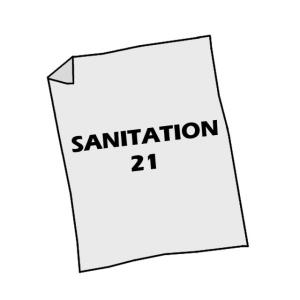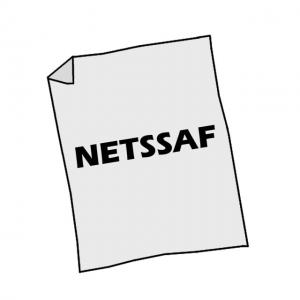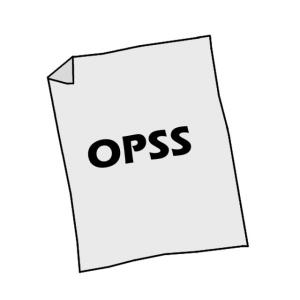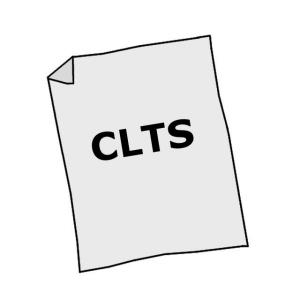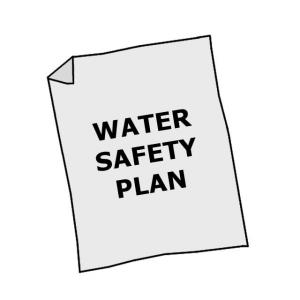A simplified sewer describes a sewerage network that is constructed using smaller diameter pipes laid at a shallower depth and at a flatter gradient than conventional sewers. The simplified sewer allows for a more flexible design at lower costs.
| In | Out |
|---|---|
Blackwater, Greywater, Brownwater, Urine or Yellowwater, Non-biodegradable Wastewater |
Blackwater, Non-biodegradable Wastewater |
Conceptually, simplified sewerage is the same as conventional gravity sewerage, but without unnecessarily conservative design standards and with design features that are better adapted to the local situation. The pipes are usually laid within the property boundaries, through either the back or front yards, rather than beneath the central road, allowing for fewer and shorter pipes. Because simplified sewers are typically installed within the condominium, they are often referred to as condominial sewers. The pipes can also be routed in access ways, which are too narrow for heavy traffic, or underneath pavements (sidewalks). Since simplified sewers are installed where they are not subjected to heavy traffic loads, they can be laid at a shallow depth and little excavation is required.
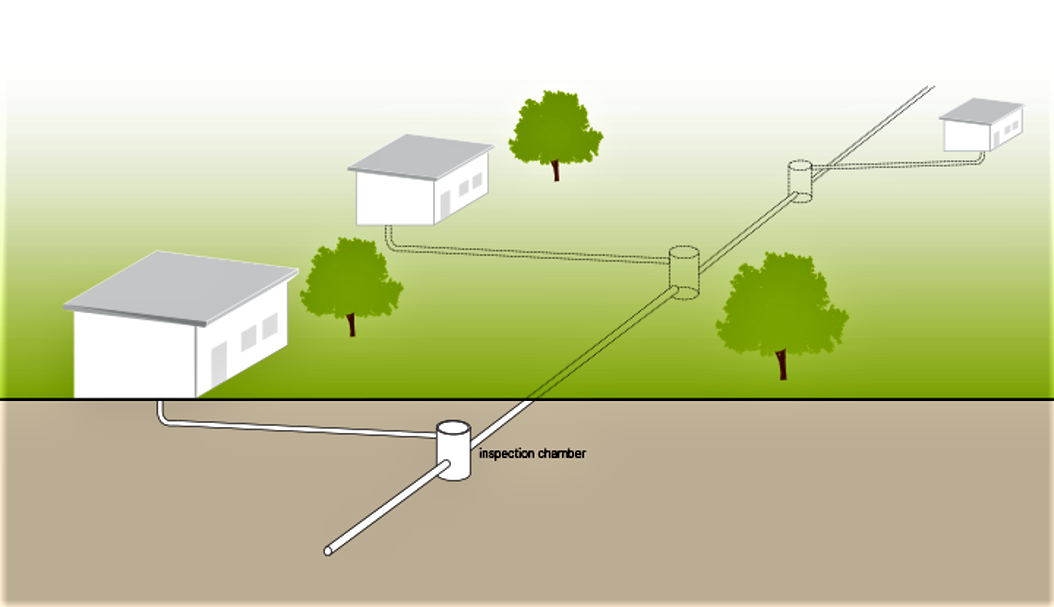
In contrast to conventional sewers that are designed to ensure a minimum self-cleansing velocity, the design of simplified sewers is based on a minimum tractive tension of 1 N/m2 (1 Pa) at peak flow. The minimum peak flow should be 1.5 L/s and a minimum sewer diameter of 100 mm is required. A gradient of 0.5% is usually sufficient. For example, a 100 mm sewer laid at a gradient of 1 m in 200 m will serve around 2,800 users with a wastewater flow of 60 L/person/day. PVC pipes are recommended to use. The depth at which they should be laid depends mainly on the amount of traffic. Below sidewalks, covers of 40 to 65 cm are typical. The simplified design can also be applied to sewer mains; they can also be laid at a shallow depth, provided that they are placed away from traffic.
Expensive manholes are normally not needed. At each junction or change in direction, simple inspection chambers (or cleanouts) are sufficient. Inspection boxes are also used at each house connection. Where kitchen greywater contains an appreciable amount of oil and grease, the installation of grease traps (see pre-treatment technologies) is recommended to prevent clogging. Greywater should be discharged into the sewer to ensure adequate hydraulic loading, but stormwater connections should be discouraged. However, in practice it is difficult to exclude all stormwater flows, especially where there is no alternative for storm drainage. The design of the sewers (and treatment plant) should, therefore, take into account the extra flow that may result from stormwater inflow.
If well constructed and maintained, sewers are a safe and hygienic means of transporting wastewater. Users must be well trained regarding the health risks associated with removing blockages and maintaining inspection chambers.
Trained and responsible users are essential to ensure that the flow is undisturbed and to avoid clogging by trash and other solids. Occasional flushing of the pipes is recommended to insure against blockages. Blockages can usually be removed by opening the cleanouts and forcing a rigid wire through the pipe. Inspection chambers must be periodically emptied to prevent grit overflowing into the system. The operation of the system depends on clearly defined responsibilities between the sewerage authority and the community. Ideally, households will be responsible for the maintenance of pre-treatment units and the condominial part of the sewer. However, in practice this may not be feasible because users may not detect problems before they become severe and costly to repair. Alternatively, a private contractor or users committee can be hired to do the maintenance.
Simplified sewers can be installed in almost all types of settlements and are especially appropriate for dense urban areas where space for onsite technologies is limited . They should be considered as an option where there is a sufficient population density (about 150 people per hectare) and a reliable water supply (at least 60 L/person/day).
Where the ground is rocky or the groundwater table high, excavation may be difficult. Under these circumstances, the cost of installing sewers is significantly higher than in favourable conditions. Regardless, simplified sewerage is between 20 and 50% less expensive than conventional sewerage.
Simplified Sewerage: Design Guidelines
Design guidelines for manual calculations of simplified sewers.
BAKALIAN, A. WRIGHT, A. OTIS, R. AZEVEDO NETTO, J. (1994): Simplified Sewerage: Design Guidelines. Washington, D.C.: United Nations Development Programme (UNDP), World Bank Water and Sanitation Program URL [Accessed: 22.07.2014]Low-cost Sewerage
This article reviews low-cost sewerage options, their potential and their limitations. It also provides guidance on how to choose the most appropriate option, and gives examples of their successful application.
MARA, D. (1996): Low-cost Sewerage. Leeds: University of Leeds URL [Accessed: 28.05.2019]Low-cost Urban Sanitation
This book covers the public health, technical, socioeconomic, sociocultural and institutional aspects of sanitation in towns and cities of developing countries. The text features excreta-related diseases and the use of sanitation to reduce their transmission. The sanitation technologies covered in detail are VIP latrines, pour-flush toilets, septic tanks, settled sewerage and simplified sewerage, with additional chapters on sullage disposal, pit emptying, and sewage treatment and reuse. Sociocultural constraints on sanitation systems and their socioeconomic costing are described, together with hygiene education, which is essential in order to achieve maximum benefits to health. The text also explains how to choose the most appropriate sanitation option for a given low-income community. Finally, institutional aspects are reviewed, including effective sanitation programme planning, monitoring and evaluation.
MARA, D. (1996): Low-cost Urban Sanitation. United Kingdom: WileySanitation for All in Periurban Areas? Only If We Use Simplified Sewerage
PC Based Simplified Sewer Design
The purpose of this document is to disseminate the simplified sewer technology more widely in the developing world, so that it can be used in peri-urban sanitation programmes and projects to improve health of poor communities. The document contains chapters on theory, planning and also practical advice.
MARA, D. SLEIGH, A. (2001): PC Based Simplified Sewer Design. Leeds: University of Leeds URL [Accessed: 28.05.2019]Good Sewers Cheap? Agency-Customer Interactions in Low-Cost Urban Sanitation in Brazil
This document surveys how the condominial system enables poor communities to investigate sewerage options and later provoke timely responses from neighbours and agencies when repairs or modifications become necessary.
WATSON, G. (1995): Good Sewers Cheap? Agency-Customer Interactions in Low-Cost Urban Sanitation in Brazil. Washington, D.C.: The World Bank, Water and Sanitation Division, US URL [Accessed: 22.07.2014]

